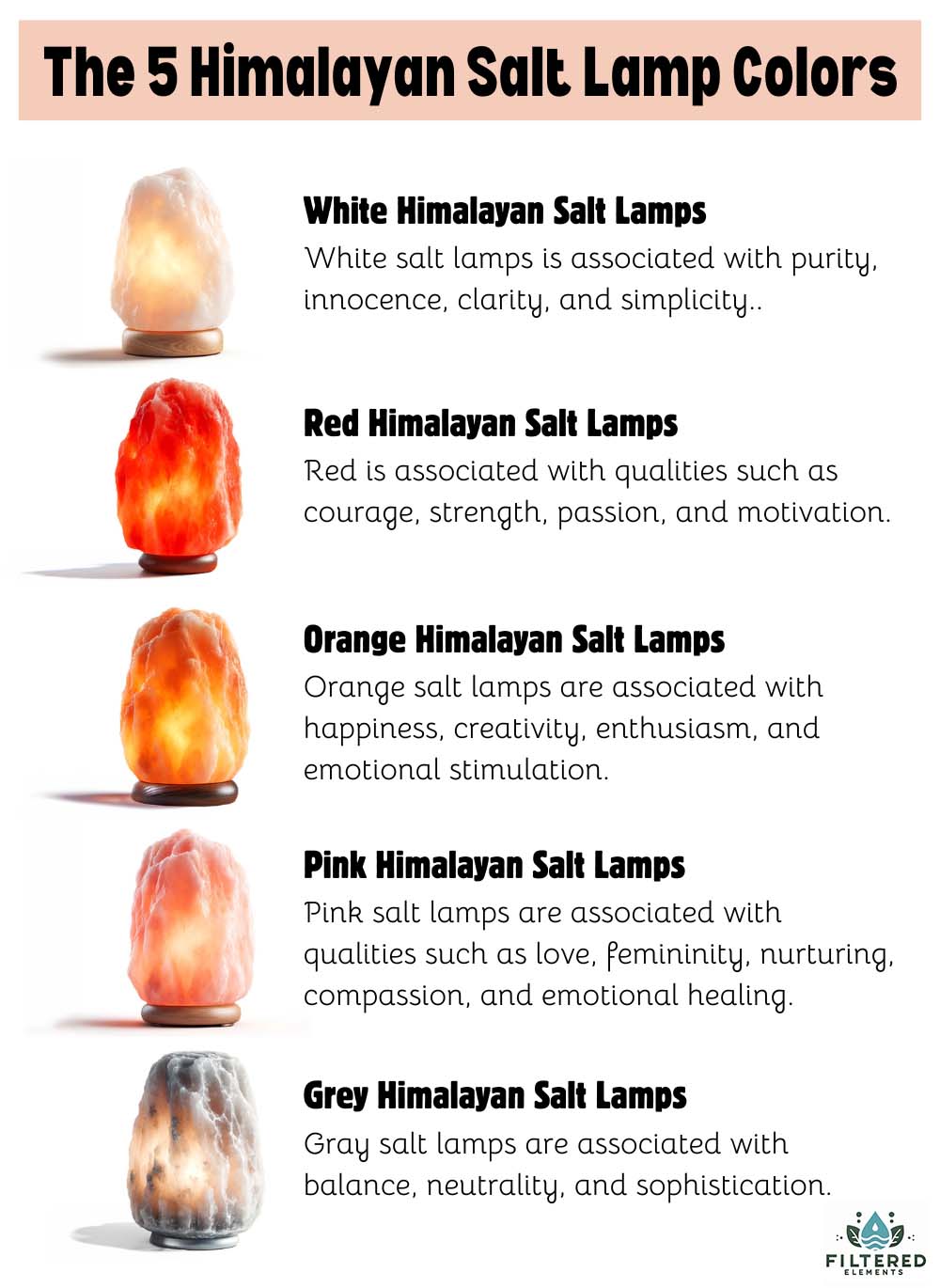Have you ever paused to wonder what lies behind the captivating glow of a Himalayan salt lamp?
From the ancient, pristine salt deposits nestled deep in the Himalayas, to the legends of their discovery by Alexander the Great’s horses, these radiant lamps have a rich and mysterious history that spans centuries.
Venture into the fascinating world of Himalayan salt as we explore its geological origins, artisanal harvesting, and transformation into the glowing lamps that promise to enhance your living space and well-being.
Join us as we explore the colors, shapes, and purported health benefits of these natural wonders, revealing why they’ve become a cherished part of homes worldwide.
Origins of Himalayan Salt
The history of Himalayan salt is shrouded in mystery, with little physical evidence to support the various theories surrounding its formation. Geologists believe that the salt was created millions of years ago when tectonic plate movements led to the development of the Himalayan Mountain range.
The area was once surrounded by shallow water, which gradually evaporated, leaving behind the salt deposits.
Over the centuries, the Himalayan salt mines have been protected from pollution and dirt by volcanic activity, snow, and ice, preserving the mineral-rich salt we use today.

The discovery of Himalayan salt is a topic of popular belief, with one legend suggesting that Alexander the Great’s horses were responsible for its initial discovery.
The story goes that Alexander and his troops stopped beside the mountains, and his horses began licking the salt-enriched walls. The troops, confused by the horses’ behavior, investigated further, leading to the discovery of Himalayan salt.
However, there is no factual evidence to confirm the validity of this claim. The first recorded instance of mining dates back to the Janjua people in the 1200s.
Emergence of Himalayan Salt Lamps
The invention of Himalayan salt lamps is credited to the Philippian siblings, Raphael and Aisa Mijeno, who designed and created these lamps in the 1980s. However, like much of the history surrounding Himalayan salt, there is no concrete evidence of the first salt lamp and its creation.
Himalayan salt lamps have gained popularity in recent decades, not only for their aesthetic appeal but also for their claimed health benefits. The lamps are crafted from salt sourced from the Khewra Salt Mine in Pakistan, located in the Himalayan Mountains.

This salt is considered one of the purest and most hygienic mineral sources, as it formed millions of years ago when the sun dried up ancient seawater, exposing the salt crystals to extreme temperatures and pressure. The result is a beautiful, solid crystal that naturally occurs in stunning shades of pink.
One of the most appealing aspects of Himalayan salt is that it does not undergo any chemical processing, ensuring that its authentic quality is preserved. This purity has led to the recent admiration for speleotherapy, a breathing therapy that focuses on the beneficial effects of breathing air laden with negative ions, typically found within salt mines or caves.
Manufacturing Process
The manufacturing process of Himalayan salt lamps begins with the extraction of salt from the Khewra Salt Mine in Pakistan. The salt is hand-mined by skilled workers who have been using traditional methods for generations. Once the salt is extracted, it is transported to processing facilities where it undergoes a series of steps to transform it into the beautiful lamps we know today.
The first step in the manufacturing process is the selection of suitable salt crystals. The crystals are carefully inspected for their size, shape, and color. Only the best quality crystals are chosen for the production of salt lamps. These selected crystals are then cleaned to remove any dirt or debris that may have accumulated during the mining process.
After cleaning, the salt crystals are cut and shaped into the desired form. This process is done by skilled artisans who use specialized tools to create the unique shapes and sizes of the salt lamps — as we’ll see next.
Once the salt crystals have been shaped, a hole is drilled into the bottom of each lamp to accommodate the electrical components. A light bulb and a power cord are then inserted into the drilled hole, and the lamp is tested to ensure that it functions properly.
The final step in the manufacturing process is the packaging and shipping of the salt lamps. Each lamp is carefully wrapped and packaged to protect it during transit. The lamps are then shipped to distributors and retailers around the world, ready to be sold to consumers who appreciate their beauty and believed health benefits.
Don’t miss out on our carefully curated list of genuine salt lamps, sourced directly from ancient salt mines. Choosing an authentic salt lamp is crucial, as it ensures you receive the full range of benefits.
Varieties of Himalayan Salt Lamps

Himalayan salt lamps come in a wide variety of shapes, sizes, and colors, each offering its own unique charm and beauty. These lamps are not only visually appealing but also believed to have various health benefits, making them a popular choice for both home decor and wellness enthusiasts.
The range of shapes and sizes available ensures that there is a Himalayan salt lamp to suit every taste and style preference.
- Natural crystal: Irregular, raw, and unpolished, showcasing the natural beauty of the salt crystal
- Pyramid: Believed to have additional healing properties due to its shape
- Globe: Smooth, polished, and rounded, creating a softer and more soothing appearance
- Bowl: Hollowed out to accommodate tea lights or other decorative elements
The color variations in Himalayan salt lamps are caused by the infusion of iron and over 80 other minerals within the salt crystal. The richer the iron content, the more intense the pinks, oranges, and reds appear. While all colors offer health benefits through the release of negative ions when heated, many people find that darker-colored lamps have a more calming effect on the surrounding environment.
- White: Found in the outer parts of the salt mine, has a low iron content, and is less common
- Pink: The most well-known variety, featuring a combination of white and red hues
- Orange: A mix between red and pink mineral compositions.
- Red: Indicates a higher iron content, resulting in dark red and orange colors
- Black (Kala Namak): Not truly black, but rather a reddish-grey color, characterized by a strong sulphur content and taste
To enhance the aesthetic appeal and functionality of Himalayan salt lamps, they are often combined with other elements such as wood and metal. Wooden bases, made from various types of wood like bamboo, pine, or oak, provide stability and add a natural, rustic look to the lamps. The unique texture and color of each wood type complements the salt crystal, creating a harmonious and visually appealing piece.
Metal elements, such as copper or stainless steel, can be incorporated into the design of Himalayan salt lamps to create decorative cages or frames surrounding the salt crystal. This addition of metal brings a modern or industrial touch to the lamp, allowing it to fit seamlessly into various interior design styles. Furthermore, metal is often used for the electrical components, like the lamp socket and power cord, ensuring durability and safety.

Be sure to check out our full guide on the different salt lamp colors to help choose the perfect one for your space and personality!
Benefits of Himalayan Salt Lamps

Himalayan salt lamps offer a wide array of benefits that can enhance your overall well-being and create a more inviting living space. These natural wonders are not only visually appealing but also possess properties that can positively impact your health and environment.
One of the most significant benefits of salt lamps is their ability to purify the air. The hygroscopic nature of Himalayan salt allows these lamps to attract and absorb water molecules from the surrounding air, along with airborne pollutants such as dust, pollen, and smoke particles. By trapping these contaminants on the lamp’s surface, salt lamps can help improve the air quality in your home, potentially alleviating allergy symptoms and promoting better respiratory health.
In addition to their air-purifying properties, Himalayan salt lamps are also believed to
- Boost mood
- Promote relaxation and sleep
- Create a soothing ambiance
- Reduce stress and anxiety
- Release negative ions
- Reduce electromagnetic radiation
- Reduction of static electricity
To learn more about the extensive benefits of Himalayan salt lamps, be sure to check out our comprehensive guide on the 8 Benefits of Salt Lamps.
Final Thoughts
As we wrap up our exploration of Himalayan salt lamps, it’s clear that these stunning natural artifacts offer more than just aesthetic appeal.
Rooted in ancient geology and brought forth through dedicated craftsmanship, each lamp holds a story that dates back millions of years. The allure of these lamps is not merely in their beauty or potential health benefits, but in their ability to connect us to the natural world in a deeply personal way.
Despite varied opinions on their therapeutic value, the soothing glow and organic presence of Himalayan salt lamps have made them a beloved addition to spaces worldwide. They not only enhance room decor but also evoke a sense of peace and harmony, inviting users to pause and appreciate the simpler elements of Earth.
Whether you’re attracted to their historical roots, captivated by their unique glow, or interested in their wellness claims, Himalayan salt lamps undeniably enrich the spaces they inhabit. As these lamps continue to illuminate homes, they remind us of nature’s timeless beauty and the enduring mysteries of our planet.




